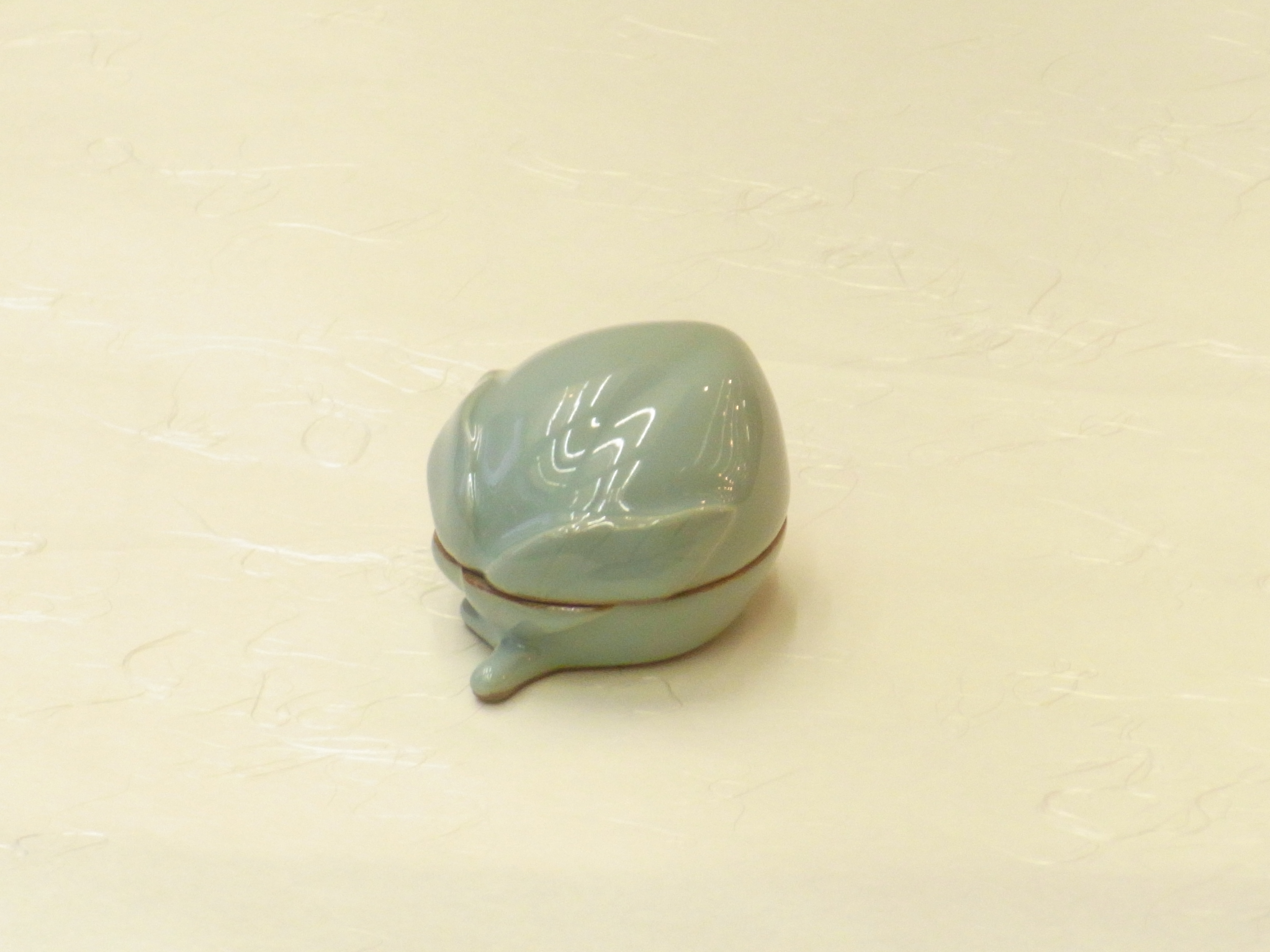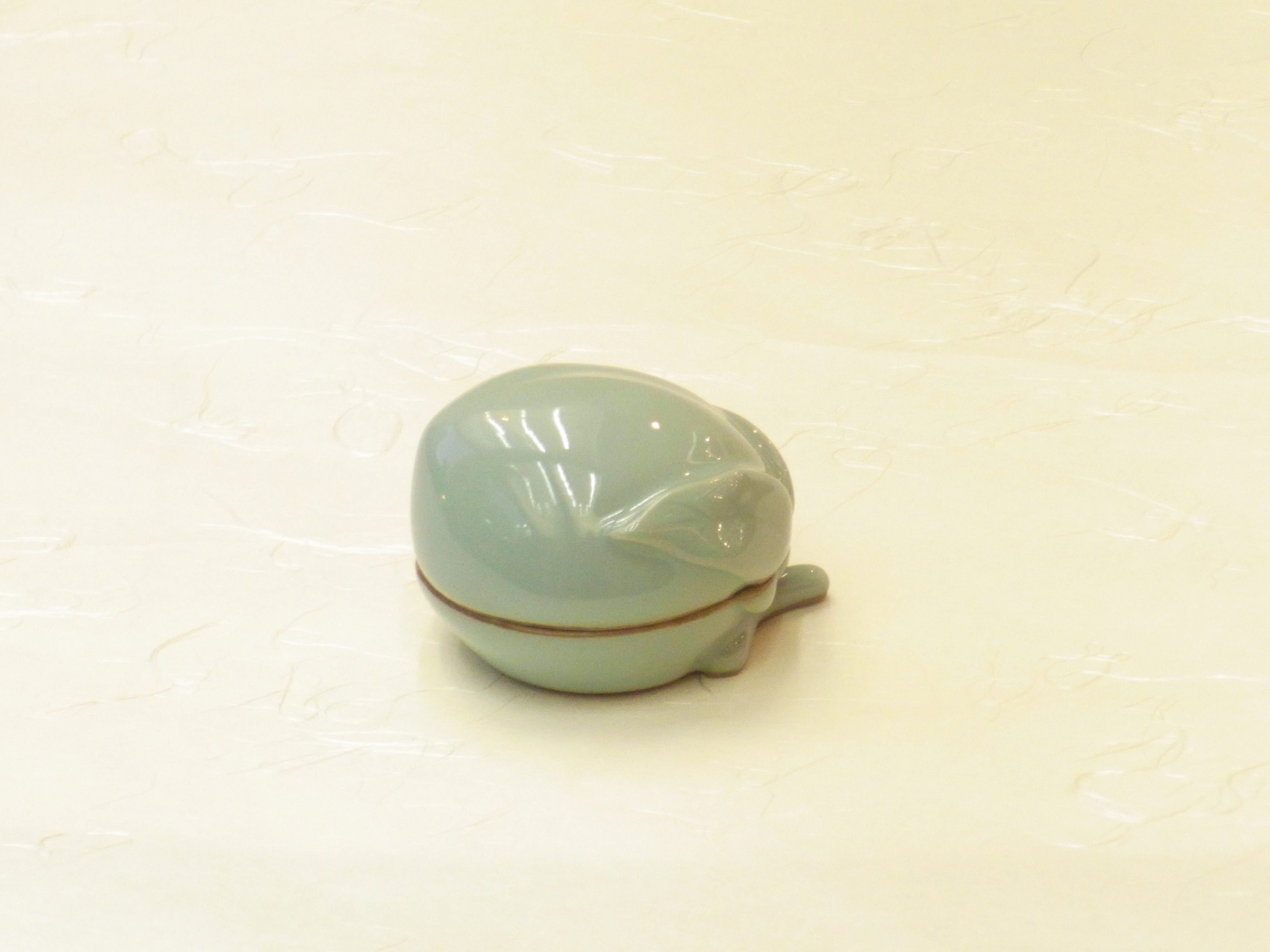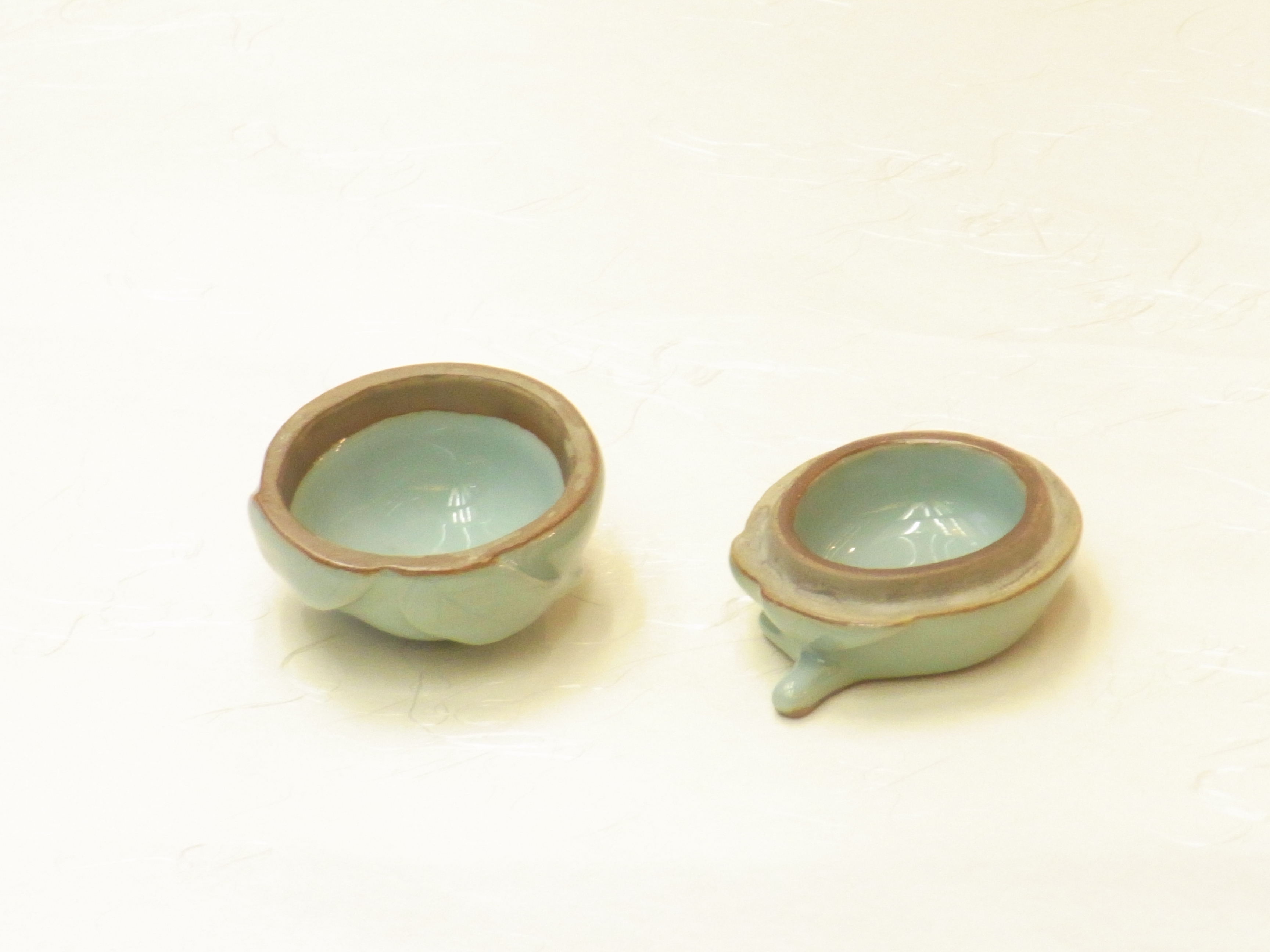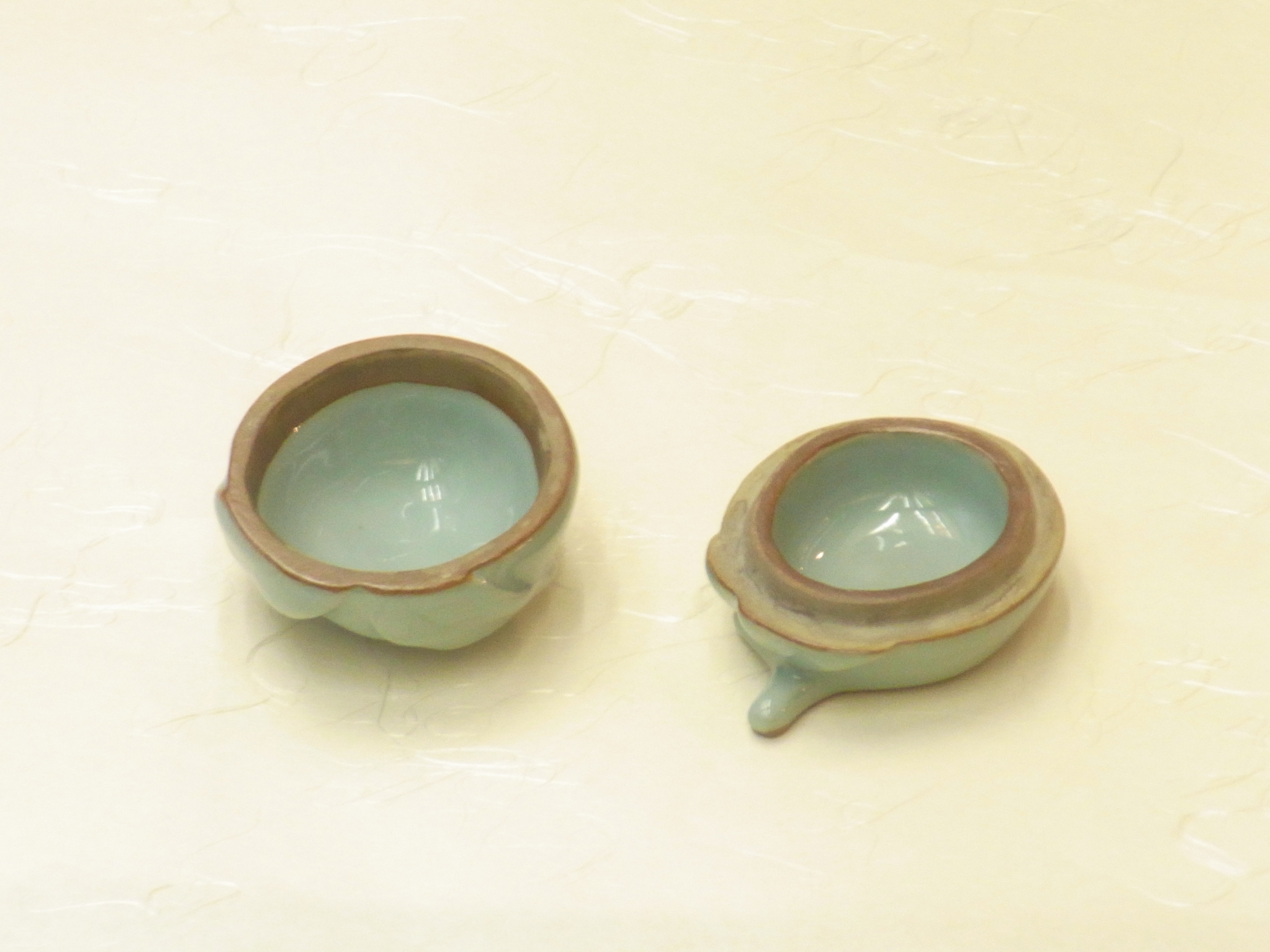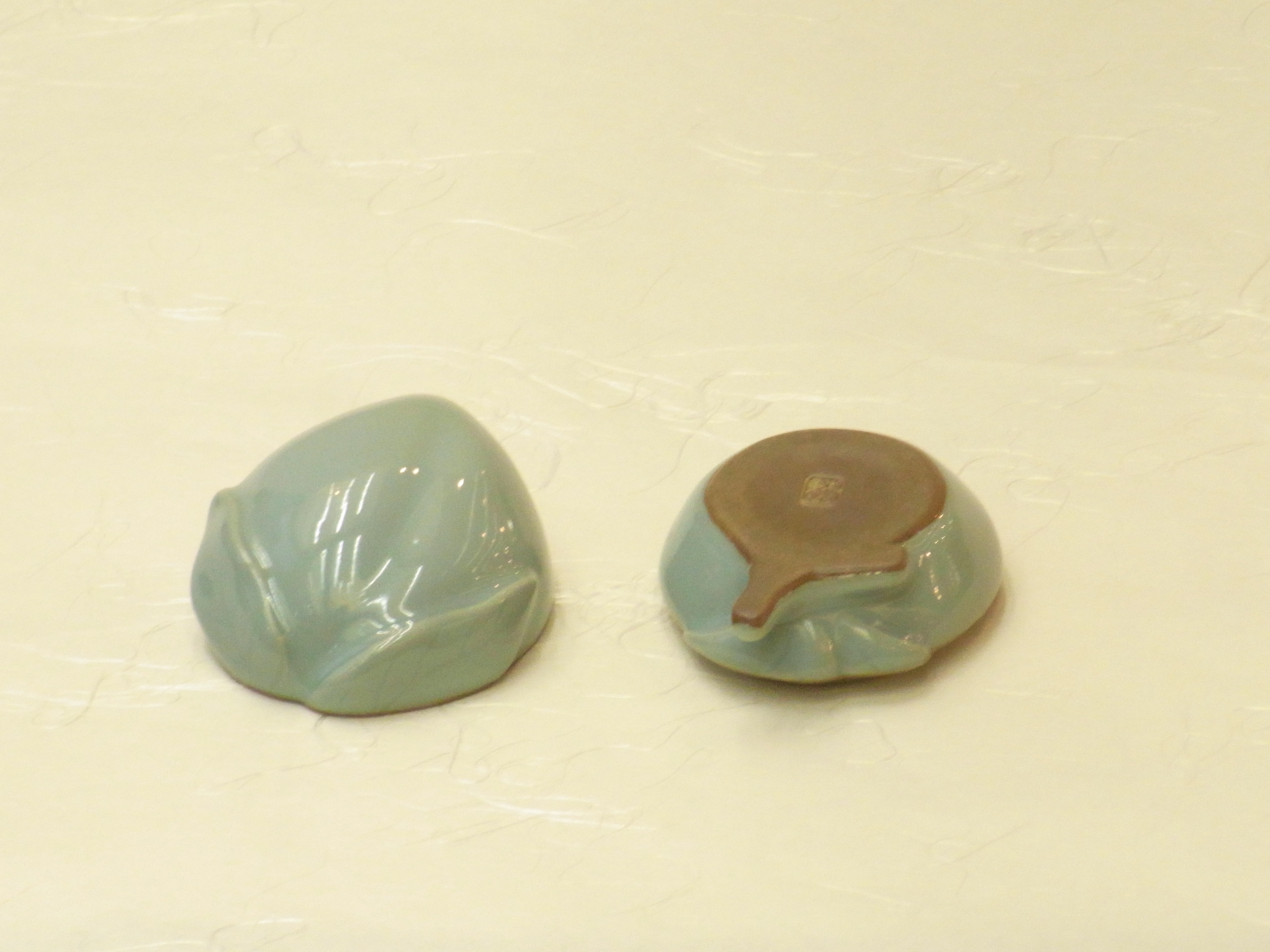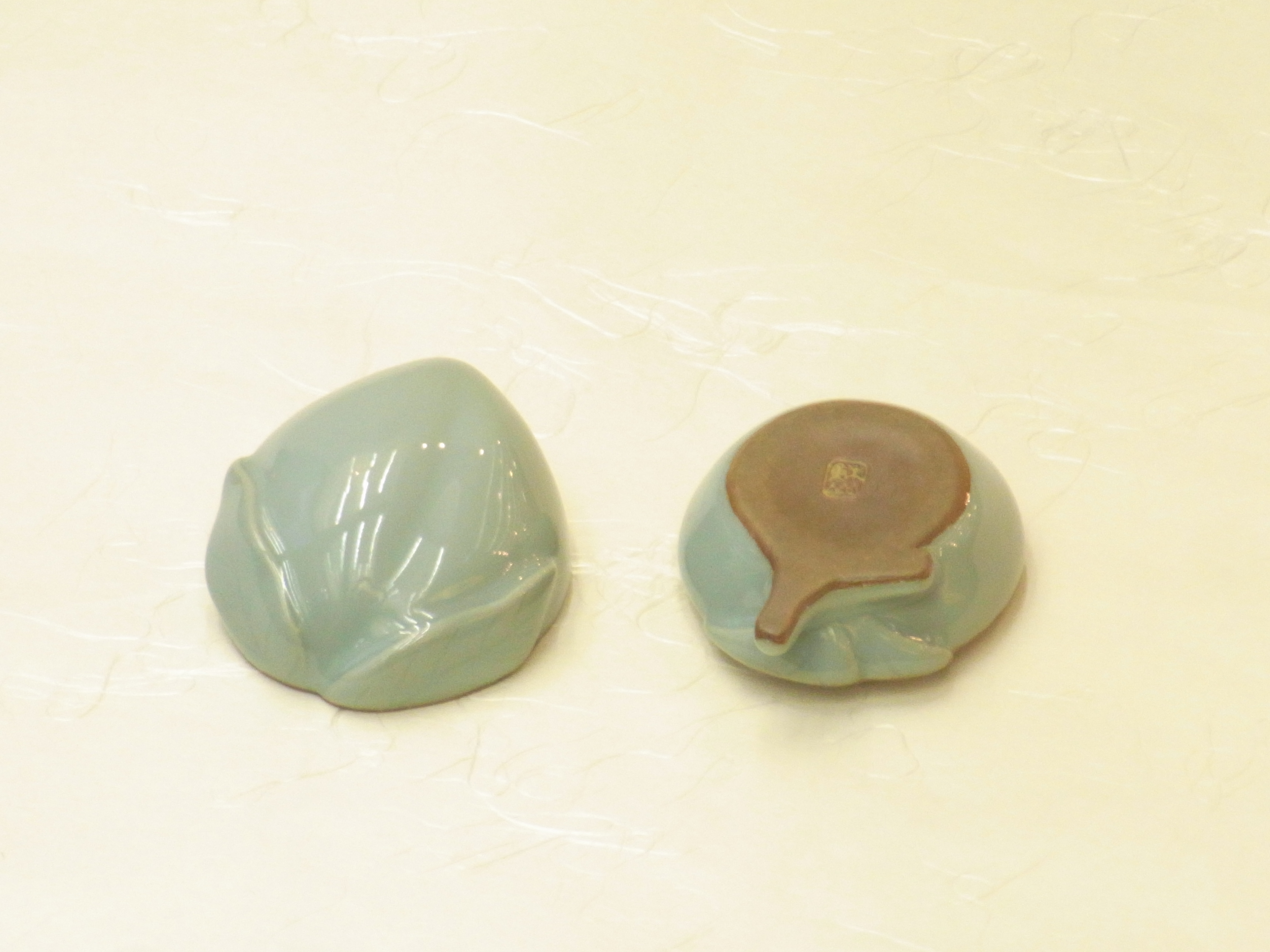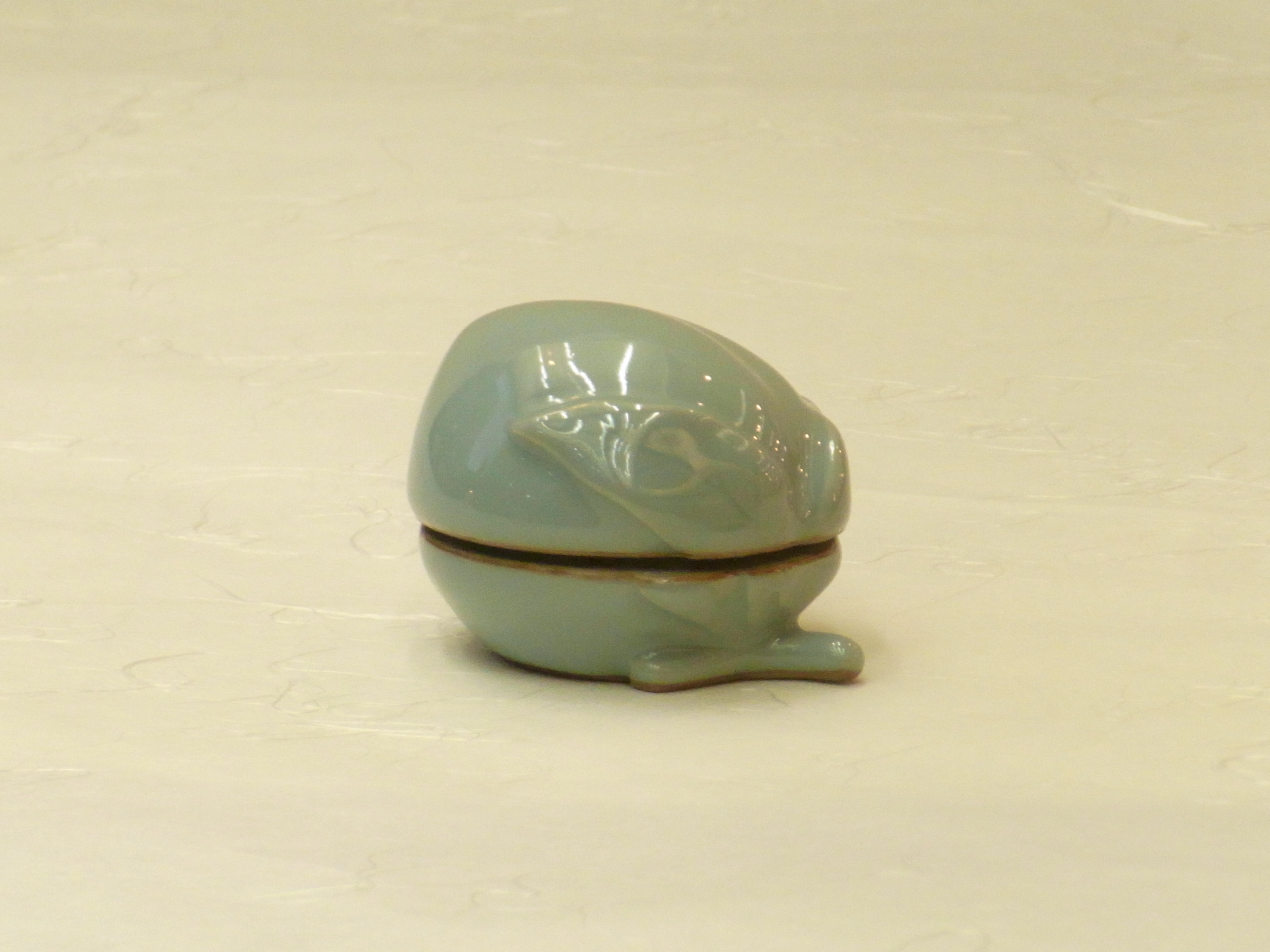三代 諏訪蘇山 作の香合のご紹介です。
香合とは、香を入れる蓋付きの器で、主に茶道で使われます。
炭点前に際して盆にのせて持ち出したり、炭斗に仕組んだり
棚などに飾ったり、床の間に古帛紗や紙釜敷にのせて飾ったりします。
どちらかというと、鑑賞の対象として見られ、その季節やお茶会のテーマ
歴史的な意味や産地、材質など、小さな器ですが、多くのことを
物語っています。
炉用の香合は練香を入れるため、陶磁器製のものを使います。
風炉用の香合は香木を入れるので、漆器のものを使います。
この青磁の香合は、諏訪蘇山独特の何とも言えない色合いをしています。
普通の青磁よりも、若干グリーンがかっていて、ぼってりととても深い色をしています。
諏訪蘇山の青磁は大変有名で、何とも言えない良さがあります。
独特の青磁は、蘇山ならではのものです。
シンプルな青磁は桃の形をしていて、珍しい香合となっています。
「桃の節句」と言われるように、春を象徴するものの一つです。
桃は人間に様々な不幸や災いをもたらす邪気を払い
不老長寿の薬としても珍重されました。
中国では縁起物として桃の実を食べる習慣があり
日本にもその文化が伝わり、「桃太郎」のような民話も生まれたとされています。
6.5㎝ × 5㎝ × 高さ4.5㎝
It is an introduction of the incense of the third generation Suwa Soyama work.
The incense is a container with a lid to put incense, and is mainly used in tea ceremony.
You can put it on a tray before the charcoal point and take it out, or you can set it on a charcoal bowl.
It is decorated on shelves, and on the floor, placed on an old tomb or paper kettle.
If anything, it is seen as the object of the appreciation, and the theme of the season and the tea ceremony
It is a small vessel such as historical meaning, origin, material, but a lot of
It tells the story.
The incense for the furnace is made of ceramic to put the paste.
The incense for the wind furnace is made of lacquerware because incense is put in.
This celadon aroma has an indescribable color unique to Suwa Suzan.
It has a slightly more green color than ordinary celadon, and is very deep.
The celadon of Mt. Suwa su is very famous, and there is a goodness which cannot be said indescribably.
The unique celadon is unique to Suzan.
Simple celadon is in the shape of a peach, and it has a rare aroma.
It is one of the symbols of spring, as it is called “Peach Festival”.
Peaches pay off the evils that bring various misfortunes and disasters to humans.
It was also prized as a medicine for longevity.
In China, it is customary to eat peach nuts as a good luck charm. It is said that the culture was introduced to Japan, and folktales such as Momotaro were born.
三代蘇瓦蘇山:這是卡約介紹。
香合是一種帶蓋子的容器,用來放入香中,主要用於茶道。
在木炭點前,把它放在託盤上,放在木炭上。
它裝飾在架子上,它裝飾在地板之間的舊地毯和紙鍋。
如果有的話,它被視為一個賞心隨,和季節和茶會的主題
歷史意義,產地,材料等,但
故事。
爐香使用陶瓷製成,用於放入揉合香中。
因為香精的風爐是把香木放進去的,所以我們用漆器的東西。
這種青瓷的香氣有一種獨特的蘇瓦蘇山色調。
它比普通的青瓷更綠,顏色非常深。
蘇瓦蘇山的青瓷非常有名,有一種難以形容的善良。
獨特的青瓷是蘇山獨有的。
簡單的青瓷是桃子的形狀,是一種罕見的香氣。
正如人們常說的”桃子節”一樣,它象徵著春天。
桃子為人類帶來各種不幸和災難的邪惡
它也被珍視為長壽的不老藥物。
在中國,有吃桃子果作為幸運符的習慣。
文化也傳到日本,民間故事,如”莫莫塔羅”也誕生了。
三代苏瓦苏山:这是卡约介绍。
香合是一种带盖子的容器,用来放入香中,主要用于茶道。
在木炭点前,把它放在托盘上,放在木炭上。
它装饰在架子上,它装饰在地板之间的旧地毯和纸锅。
如果有的话,它被视为一个赏心随,和季节和茶会的主题
历史意义,产地,材料等,但
故事。
炉香使用陶瓷制成,用于放入揉合香中。
因为香精的风炉是把香木放进去的,所以我们用漆器的东西。
这种青瓷的香气有一种独特的苏瓦苏山色调。
它比普通的青瓷更绿,颜色非常深。
苏瓦苏山的青瓷非常有名,有一种难以形容的善良。
独特的青瓷是苏山独有的。
简单的青瓷是桃子的形状,是一种罕见的香气。
正如人们常说的”桃子节”一样,它象征着春天。
桃子为人类带来各种不幸和灾难的邪恶
它也被珍视为长寿的不老药物。
在中国,有吃桃子果作为幸运符的习惯。
文化也传到日本,民间故事,如”莫莫塔罗”也诞生了。
